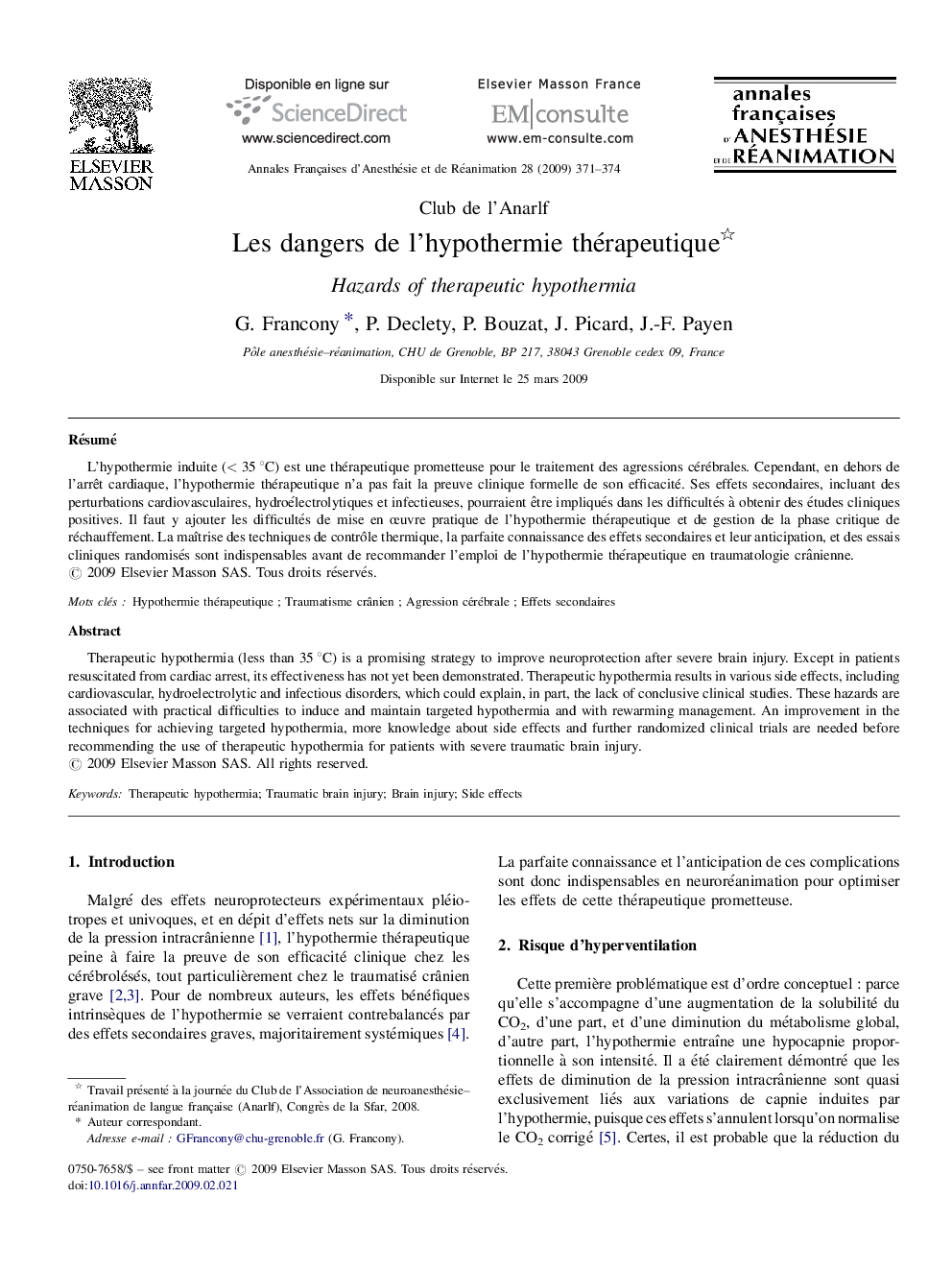| Article ID | Journal | Published Year | Pages | File Type |
|---|---|---|---|---|
| 2747167 | Annales Françaises d'Anesthésie et de Réanimation | 2009 | 4 Pages |
RésuméL’hypothermie induite (< 35 °C) est une thérapeutique prometteuse pour le traitement des agressions cérébrales. Cependant, en dehors de l’arrêt cardiaque, l’hypothermie thérapeutique n’a pas fait la preuve clinique formelle de son efficacité. Ses effets secondaires, incluant des perturbations cardiovasculaires, hydroélectrolytiques et infectieuses, pourraient être impliqués dans les difficultés à obtenir des études cliniques positives. Il faut y ajouter les difficultés de mise en œuvre pratique de l’hypothermie thérapeutique et de gestion de la phase critique de réchauffement. La maîtrise des techniques de contrôle thermique, la parfaite connaissance des effets secondaires et leur anticipation, et des essais cliniques randomisés sont indispensables avant de recommander l’emploi de l’hypothermie thérapeutique en traumatologie crânienne.
Therapeutic hypothermia (less than 35 °C) is a promising strategy to improve neuroprotection after severe brain injury. Except in patients resuscitated from cardiac arrest, its effectiveness has not yet been demonstrated. Therapeutic hypothermia results in various side effects, including cardiovascular, hydroelectrolytic and infectious disorders, which could explain, in part, the lack of conclusive clinical studies. These hazards are associated with practical difficulties to induce and maintain targeted hypothermia and with rewarming management. An improvement in the techniques for achieving targeted hypothermia, more knowledge about side effects and further randomized clinical trials are needed before recommending the use of therapeutic hypothermia for patients with severe traumatic brain injury.
